Legacy Maverick vs. Death & Taxes: Matchup Analysis
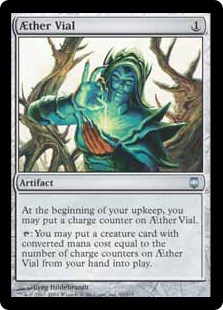
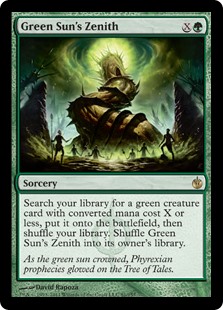
Welcome back to the third instalment of the GreenSunsZenith’s Maverick matchup series! This series is a breakdown of Legacy Maverick’s matchups and how you should approach different strategies in the format.
Phil Gallagher is a well-known personality in the Legacy community. He’s the founder of Thraben University and a member of the Eternal Glory Podcast and variety streamer. A big thank you to Phil for coming on the GreenSunsZenith – it means a lot as Thraben University was a huge inspiration for this site.
And another huge thank you to my Patreon supporters for supporting this article. If you’d like to see more of these, I’d really appreciate your support!
Table of Contents:
1. Decklists for Reference
2. Introduction into Death & Taxes
3. Matchup History
4. Sideboarding Strategy
5. Tips & Tricks
6. Conclusions
7. Previous Matchup Series
8. Coverage & Resources
1. Decklists
Below are two 75s considered stock decklists for both Death & Taxes and Maverick. Although this article will focus on the Abzan build of Maverick, I will touch on the other builds where relevant.
Maverick variants
Had a few ask for my thoughts on Maverick so here's my draft 75's for:
💚 GW
💀 Abzan
💪 BANT (Hull>3ef)
🔥 Punishing Mav.Pretty stock lists – gameplay will lead to changes.
Looking forward to exploring the new metagame TOMORROW NIGHT ON STREAM! 7:30PM AEST🎙️😊 #MTG #MTGLegacy pic.twitter.com/tjZt7p2S8u— DougesOnTwitch🎥 (@DougesOnTwitch) February 17, 2021
The link above will give you access to a few different versions of Maverick and how I see each version right now. Thankfully, Maverick is an archetype where each versions has a few flex slots where you can be creative and hone into your own local metagame. These aren’t 100% perfect but should give you a general idea of what each version is trying to accomplish.
Death & Taxes
Notably, there currently isn’t really a stock Death & Taxes list. D&T is a control deck. The metagame has recently been shaken up. Accordingly, the deck isn’t perfectly tuned to fight specific archetypes yet. This 5-0 list is a great starting point, but a stronger stock list will appear over the next 2-3 weeks as we get a clearer picture of the metagame. This sideboard is a little bit too geared towards fighting combo for my liking.
2. Introduction into Death & Taxes
Generally speaking, D&T is a control deck at heart. It is often mistaken as a white weenie deck at first glance, but this deck is not looking to end the game quickly. It seeks to slowly establish a stranglehold on the game with disruptive elements like Thalia, Wasteland, and Rishadan Port, and then to finish the game once the opponent is off balance.
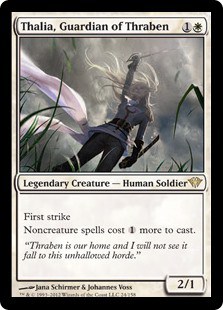
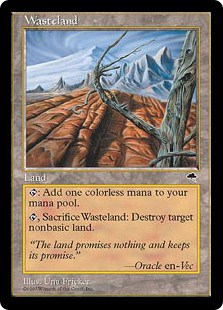
The Stoneforge Mystic package or Recruiter of the Guard loops with Flickerwisp often bury the opponent in card advantage, but attacking the opponent for two damage a turn while denying mana gets the job done, too.
The Maverick vs D&T matchup is a very skill-intensive grind. The classic question of, “Who’s the Beatdown,” is really critical here. Often the answer is “nobody” or more accurately, “nobody yet.” Since the two decks are cut from the same cloth, boardstates often stall out. Lines of creatures stare at each other until someone is able to break serve and start grinding incremental advantage.
The matchup is often a battle of inches. Things are really tight and back-and-forth for a long time, and then the metaphorical dam breaks and someone pulls way ahead. Find that way to get rid of your opponent’s Mother of Runes or connect with equipment for the first time, and you’ll likely set yourself up for success.
3. Matchup History
Generally speaking, I feel like the D&T vs Maverick matchup is pretty even. I think the more experienced pilot has many opportunities to play tight and gain an edge, and one misplay often tilts the scales heavily. That said, I think deck composition plays a HUGE role here.
The D&T player who showed up with a playset of Crusader is going to have a good day. Similarly, the Maverick player with a bunch of Plague Engineers in the 75 is going to steal a bunch of games. If I had to pick a side, I’d probably say that Maverick is favoured, but the margin there is incredibly small.
In terms of power, I feel like GWB Maverick is the most favoured vs D&T, followed by GW, followed by anything else. I think Plague Engineer is worth its weight in gold in this matchup, but otherwise, I value stable mana over anything else.
The Punishing Fire package always sounds good from the red splash builds, but I often find that either Rest in Peace or Wasteland make that package clunkier than you might expect in the post-sideboard games.
Phil’s hit the nail on the head when it comes to the matchup. I’ve always found non-Aether Vial starts are much more favoured for Maverick as you’re able to have more control over how much early-mid game pressure your opponent can add to the board. It also takes the stress away from instant-speed shenanigans with Flickerwisp and EOT Mother of Runes.
Depending on how your opponent starts out, Wasteland’s effect on the game could be the difference in keeping your opponent off a second white source and not having a real impact at all. An early, unanswered Mother of Runes used to be a huge deal, but with Plague Engineer in most GWB maindecks, the pressure to answer Mother has been slightly lowered.

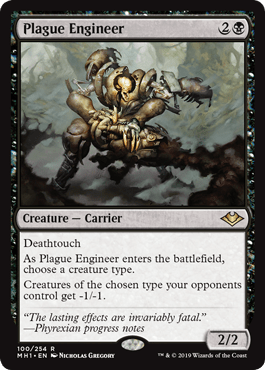
The same could be said regarding a T1 Aether Vial and Collector Ouphe as a soft answer (I say soft as Flickerwisp and hard removal in Skyclave Apparition or Swords to Plowshares can mitigate that plan). Abrupt Decay is also a huge asset in this matchup as a great answer to both T1 plays from D&T when you’re on the play.
In terms of our T1 plays, mana-acceleration is a huge advantage and an online Mother of Runes is a little harder for D&T to handle. Getting ahead of Wasteland and Port with Noble’s or a Bird can be the difference between getting a threat on the field or passing turn with little hope in casting your spells on curve.
Flyers can be an issue for Maverick as the deck only tends to run a single Birds of Paradise and Scryb Ranger. If the ground becomes a stalemate, it can be easy for D&T to win through the air in a matter of turns.
The red splash can be great in game 1 as Punishing Fire can really blow out the mid-late game once paired with a Grove of the Burnwillows, but I think it’s fair to say you’re going to have the smoothest time on the black splash. My only tip is to not expose your black sources too early, as D&T can quickly remove them and turn off your ability to cast any of your haymaker cards like Plague Engineer.
Which cards in D&T do you think are notable in the matchup and why?
The core defensive cards of D&T are pretty important here. Your opponent has the bigger creatures at the end of the day, so you need to make sure you can hold a defensive line. Swords to Plowshares, Mother of Runes, and Skyclave Apparition will keep you from dying to an early Knight of the Reliquary. While this sounds silly, a medium-sized Knight will outclass every creature in D&T on its own. If you’re looking to drag the game on and grind advantage in the endgame, you need to survive the early game. These defensive cards let you do that.
As far as the maindeck flex slots go, Mirran Crusader is probably the most impactful card. It’s a swiss army knife in this matchup. It can wall Knight, push damage through most blockers, and is a real crazy threat when paired with anything that buffs its power like equipment or Luminarch Aspirant. On weeks where I’m playing a pile of Mirran Crusader, this matchup feels like a bye; the rest of the time though, I’m prepared to settle in for 50 minutes of combat math.
Skyclave Apparition is a huge printing for the deck as a way to deal with some of Maverick’s biggest threats, from Knight of the Reliquary to an early Sylvan Library to Umezawa’s Jitte. Having to rely on your 4 Swords to Plowshares and sometimes the ability to flicker a Palace Jailer isn’t a great way to fight against a deck with 20+ creatures. Skyclave has really given the deck a way to deal with any problematic card put in front of them and is even more powerful when partnered with Flickerwisp.
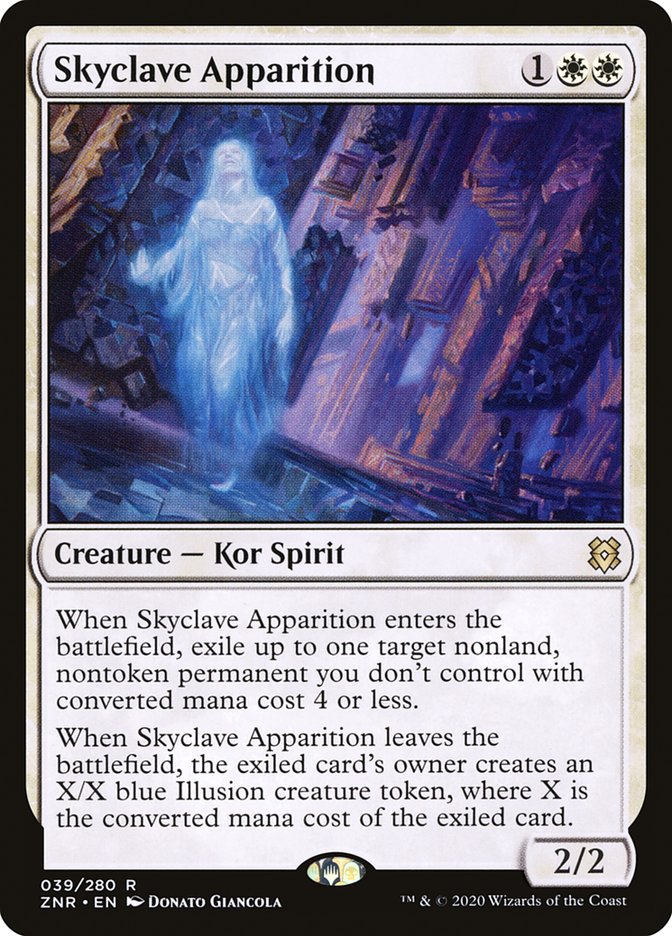
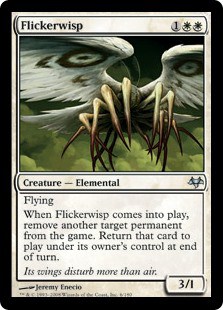
An early Aether Vial is the other notable card. It allows a D&T pilot to then really go after your manabase with Wasteland and Rishadan Port or bury you in even more creatures. The non-Vials are met with a huge sigh of relief every time I play the matchup because of how much flexibility it gives D&T with using their creatures and mana efficiently.
If you want to learn more about Death & Taxes and Maverick’s place in the Legacy metagame, Phil and I took part in the 3rd episode of Brian Coval’s Deep Analysis.
4. Sideboarding Strategy
Generally speaking, sideboarding against Maverick is really easy. Cards like Thalia, Spirit of the Labyrinth, and Sanctum Prelate that are often a major pain for blue decks are incredibly underpowered here. I start by cutting or trimming those. I replace them with whatever removal and additional threats I can. Expect to see things like Path to Exile, Palace Jailer, Gideon, and Council’s Judgment coming in.
Rest in Peace is really the only card worth talking about in detail. This one is borderline vs many versions of Maverick. Reducing the power and toughness of every Knight to just a 2/2 is cool, but is that worth a card? Maybe – maybe not. It really depends on your specific in/out numbers.
If your opponent has something else that is really graveyard-centric such as Punishing Fire from a red splash, it’s a slam dunk. Otherwise, it’s a tough call. If you’re on the fence, leave it in the sideboard; if you trim too many creatures in a creature mirror, you may find it a bit too hard to defend the board or close out the game.
Thankfully sideboarding is pretty easy in fair matchups. The 6 cards that come straight to mind when boarding are:
4 Thalia, Guardian of Thraben
1 Gaddock Teeg
1 Scavenging Ooze
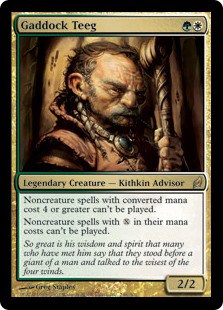

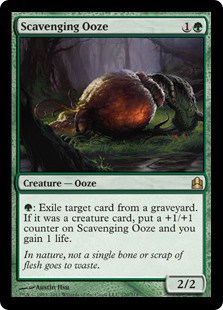
Thalia’s first strike might seem relevant in a creature-based matchup, but that’s where her benefits end. She’s very awkward against a deck with 3+ Karakas and often taxes you much more than your opponent. Teeg shutting off your own Green Sun’s Zenith and post-board planeswalkers as well as being soft to Karakas are also solid reasons to remove him from the matchup. This is just a matchup where Teeg might stop opposing bombs like planeswalkers or Cataclysm, but he’s just impacting your gameplan in a much more meaningful way.
There’s a fair amount of exile effects in this matchup, so not too many creatures go to the graveyard. Scooze is also soft to Flickerwisp, causing a reset and post-board graveyard hate.
What do I tend to board in?
-
- Additional removal (Both creature / artifact removal)
- Planeswalkers
- Thoughtseize (on the play)
Thoughtseize is an interesting one, but with recent printings in Recruiter of the Guard and Palace Jailer on top of Stoneforge Mystic, D&T players are hardly out of cards at any given stage of a game. It might not be a game-changer, but being able to steal an Aether Vial from an opening hand, a freshly tutored Jitte or Wisp is huge game in shutting down any sort of engine from your opponent.
I’d expect some number of Path to Exile, Council’s Judgment, Rest In Peace and planeswalkers like Gideon, Alley of Zendikar in post-board matchups. Also be cautious of Containment Priest as it can lead to some very awkward Green Sun’s Zenith hands.
5. Tips & Tricks
If you’re looking to get better at this matchup, the thing I recommend the most is to have someone else watch you play. I find many players zero in on a specific plan for a game and don’t deviate from it as conditions change. I don’t know how many times I’ve said to myself something like, “Oh, I’m so dead if that Knight starts attacking,” only to have my opponent pass the turn five times in a row. Try to identify what matters at any given time, and push that axis as hard as you can. When things change though, adapt your plan; don’t keep on the same course if it’s becoming increasingly unlikely to work out. Correctly identifying your role and pivoting as necessary is a key.
Some notable tips from Maverick side include:
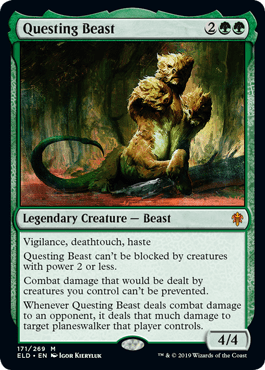
- Questing Beast allows you to nullify an opposing Mother of Runes. Protection prevents damage but Questing Beast doesn’t allow damage to be prevented.
- It can be a little awkward if you have an Abrupt Decay in hand and your opponent has an Aether Vial on 1. If you want to find a point where you can either take them off the Vial ASAP or deal with an incoming Mother of Runes, wait until their next upkeep. If they didn’t put a Mother into play in the end step, you can now safely Decay the Vial before they put another counter on Vial in their upkeep.
- Your opponent has to respond to a Green Sun’s Zenith for x=2 or more if they think you’re getting a Collector Ouphe. If your opponent lets GSZ resolve, they now can’t activate their Vial after an Ouphe has hit the field. One small trick is GSZ for 3 where your opponent might think you’re getting a Knight of Autumn and have time to activate a Vial. GSZ allows you to grab any creature with CMC equal to or less than x so in this case, grabbing Ouphe instead could really take your opponent off guard.
- Plague Engineer on Human is usually the best name in the blind.
- If you’re running Scryb Ranger, don’t underestimate the power of getting blocks with Dryad Arbor, then returning to hand before damage. Arbor is a little more open to disruption against a deck with both Wasteland and Rishadan Port, but this can be a crucial trick to be aware of especially when your opponent is attacking with an equipped, ground creature.
- Always double and triple check how many Thalia’s are in play during G1 before you cast Green Sun’s Zenith!
- Use your removal wisely. Don’t just throw away a Swords to Plowshares on the first creature you see. Sometimes you can literally dismiss some creatures thanks to your bigger threats and keep removal for Mother or equipped creatures.
6. Conclusions
While I have a reputation as “the D&T guy,” in reality, these days I’m much more of a variety streamer than anything else. If you’re interested in some sweet Legacy content with some somewhat questionable decks, check me out on Twitch or Youtube. I played a league with a Hushbringer Stiflenought deck recently that was particularly spicy; I highly recommend that one. If you want more general strategy and theory, check out my podcast instead!
I hope you all are enjoying Legacy as much as I am right now, and best of luck to all those fair non-blue mages out there. Keep fighting the good fight!
A huge thank you to Phil for coming on the GreenSunsZenith for this matchup discussion. Death & Taxes was my first deck in Legacy and is still the deck I have my best finishes with, so to have this resource now on the site is an awesome addition.
If you’re looking to improve your matchup on either side of the table, practise. practise. practise. Try a mix of 3 pre-board games then 3 post-board with a friend or player at your local to get a really good understanding of how each deck performs.
Have a thought that wasn’t covered above? Comment below!
As always, play well, play fair and I’ll catch you soon.
Douges
Where to find Phil:
Streaming on Twitch
Posting on Twitter
Uploading to YouTube
Eternal Glory Podcast
Thraben University
7. Previous Matchup Series
Maverick vs. Eldrazi Aggro feat. Achillies27
Maverick vs. RUG Delver feat. Rich Cali
8. Coverage & Resources
Here are timestamps to MTGO leagues where I’ve played against Death & Taxes while on Maverick. If you enjoy this content, consider subscribing to my YouTube channel!
Maverick vs. Death & Taxes
Abzan Maverick vs. Death & Taxes
Abzan Maverick vs. Death & Taxes
Abzan Maverick vs. Death & Taxes
BANT Maverick vs Death & Taxes
Punishing Maverick vs Death & Taxes
Punishing Maverick vs Death & Taxes
Punishing Maverick vs Death & Taxes









